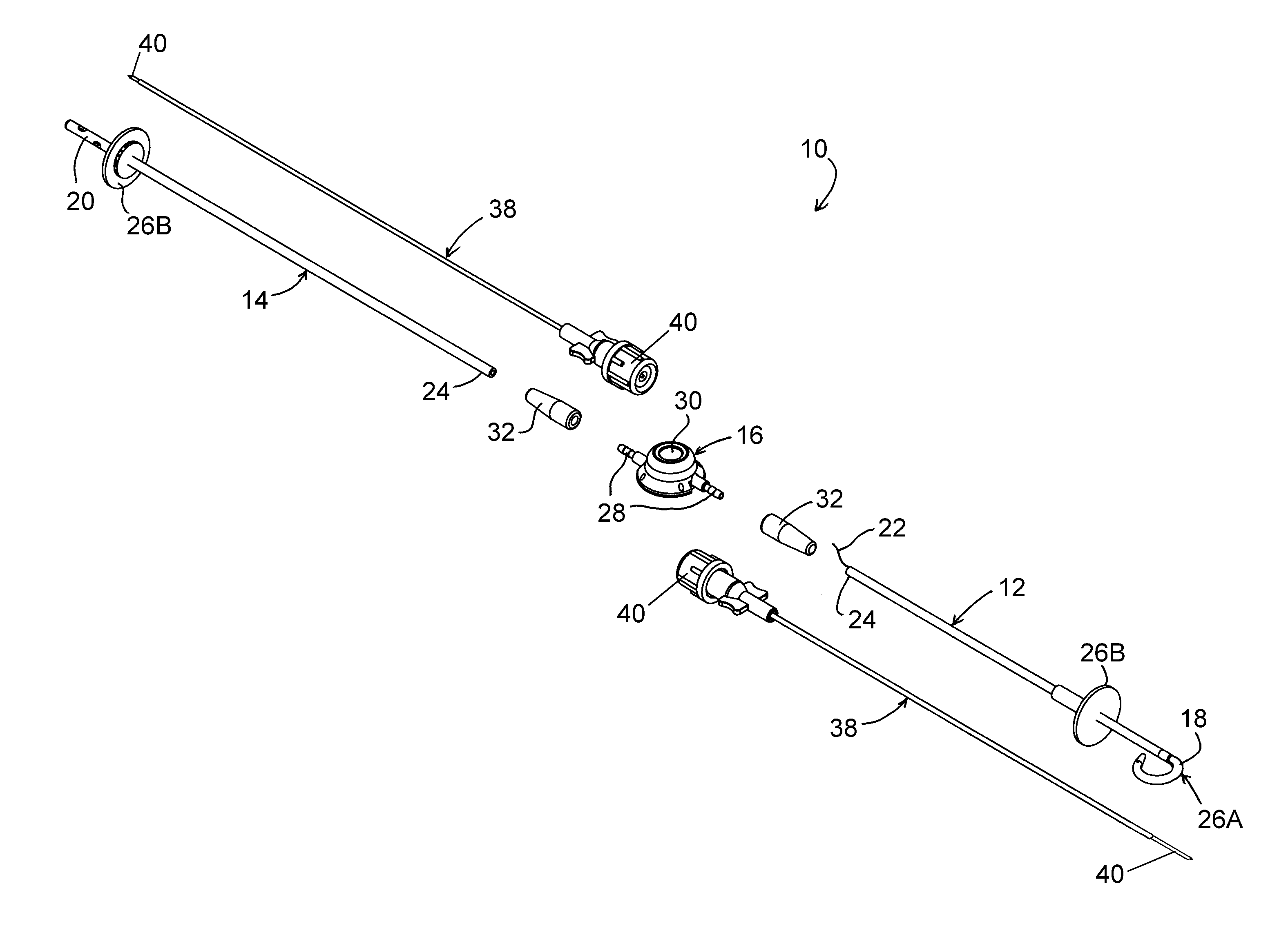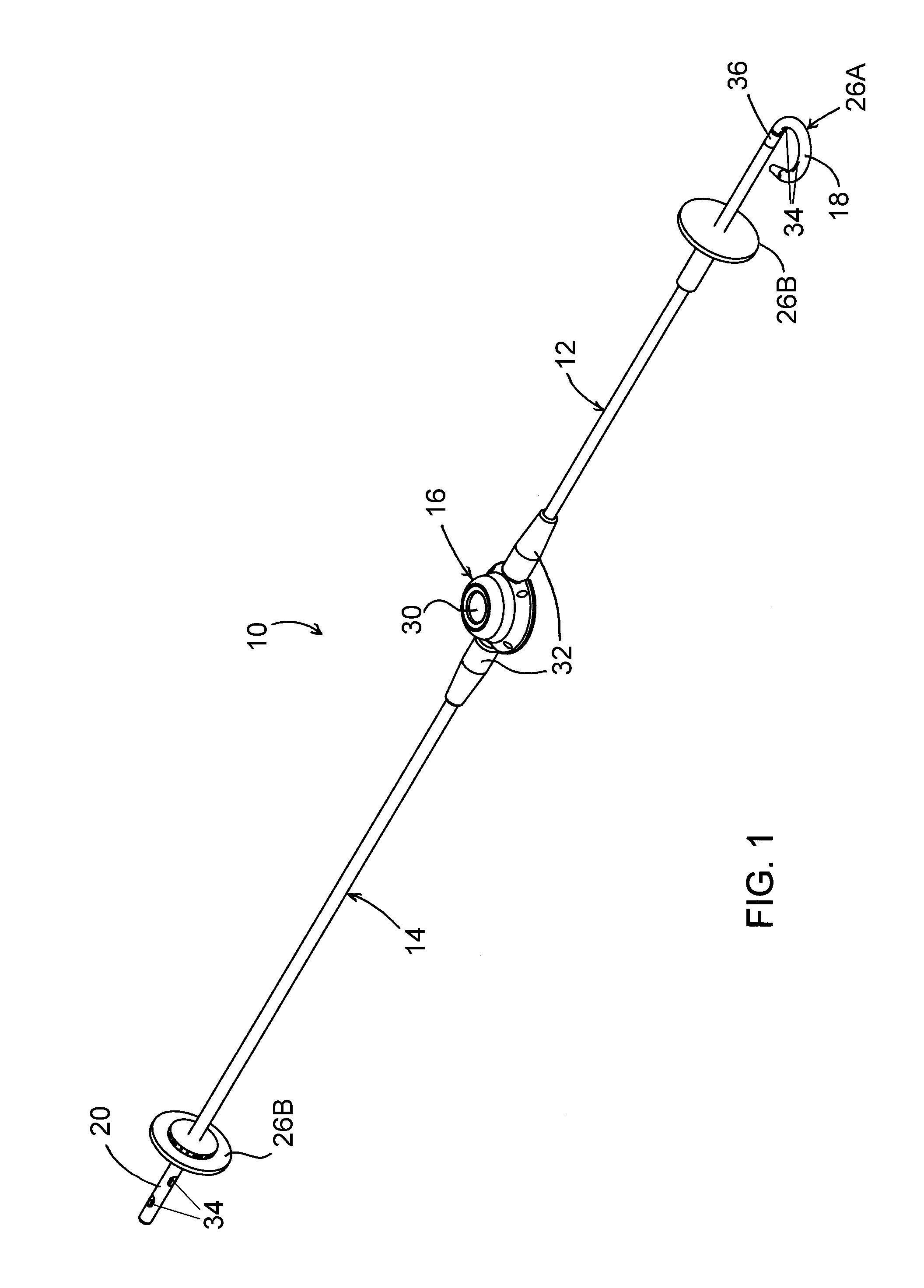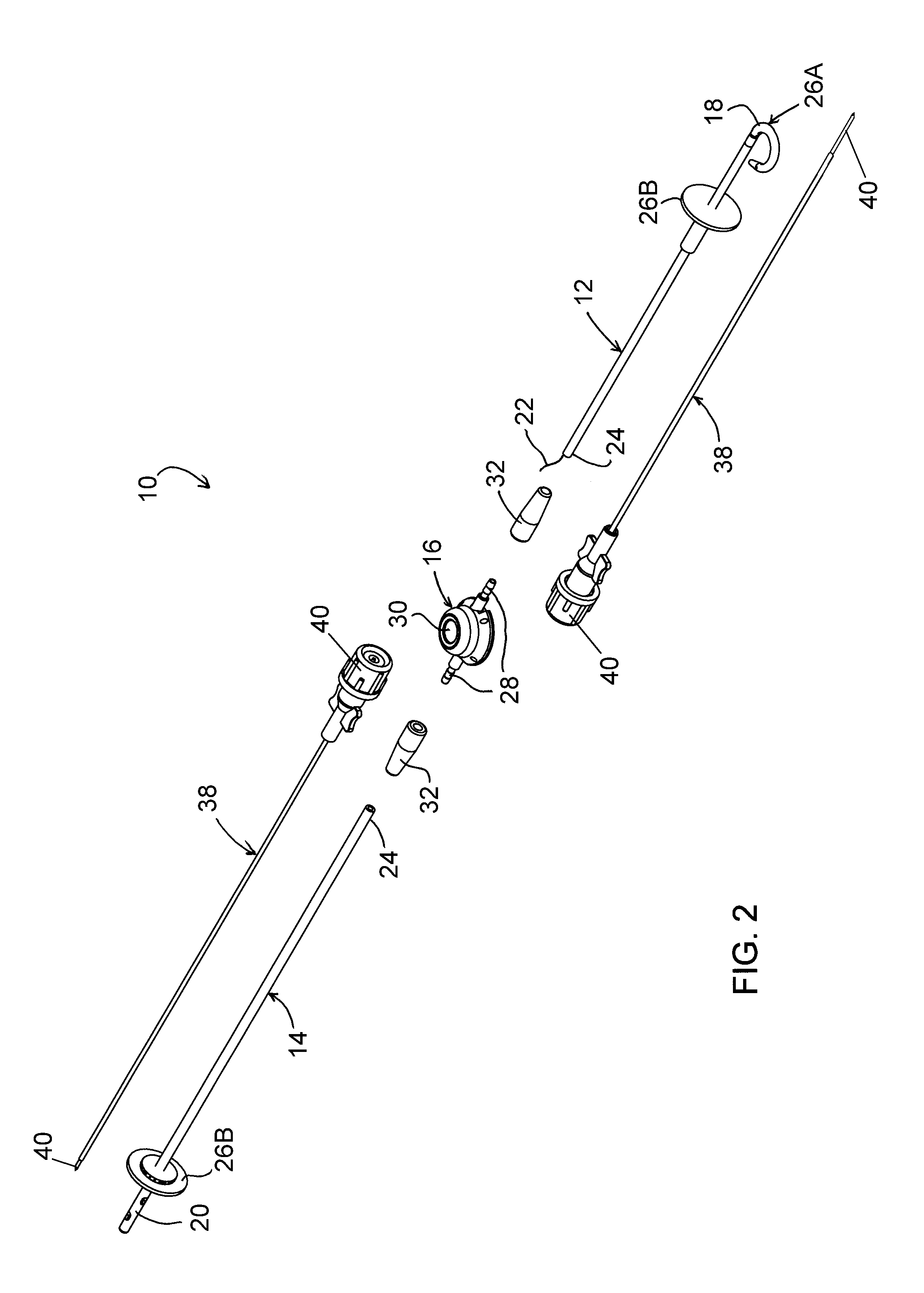Ureteral bypass devices and procedures
a technology of ureteral bypass and bypass device, which is applied in the field of ureteral bypass device, can solve the problems of inability to achieve long-term use, and major ureteral obstruction
- Summary
- Abstract
- Description
- Claims
- Application Information
AI Technical Summary
Benefits of technology
Problems solved by technology
Method used
Image
Examples
Embodiment Construction
[0016]The following describes what will be referred to as a ureteral bypass device (UBD) that is capable of treating causes of ureteral obstruction. The device can be used in humans (children and adults) and animals, regardless of etiology, species, or patient size, and can be optimized for the patient. In addition, the UBD of this invention beneficially allows for secure and facile placement of the device within the patient, as will be evident from the following discussion.
[0017]FIG. 1 represents a particular embodiment of a UBD 10 as comprising a pair of catheters 12 and 14 and a shunting adaptor 16 to which the catheters 12 and 14 are coupled. The adaptor 16 is represented in FIGS. 1 and 2 as being configured as a shunting port, though from the following discussion it will become apparent that the certain features of a port would not be necessary in all embodiments of the invention. Distal ends 18 and 20 of the catheters 12 and 14 are adapted to be placed within, respectively, th...
PUM
 Login to View More
Login to View More Abstract
Description
Claims
Application Information
 Login to View More
Login to View More - R&D
- Intellectual Property
- Life Sciences
- Materials
- Tech Scout
- Unparalleled Data Quality
- Higher Quality Content
- 60% Fewer Hallucinations
Browse by: Latest US Patents, China's latest patents, Technical Efficacy Thesaurus, Application Domain, Technology Topic, Popular Technical Reports.
© 2025 PatSnap. All rights reserved.Legal|Privacy policy|Modern Slavery Act Transparency Statement|Sitemap|About US| Contact US: help@patsnap.com



